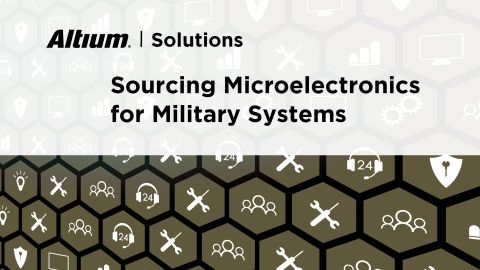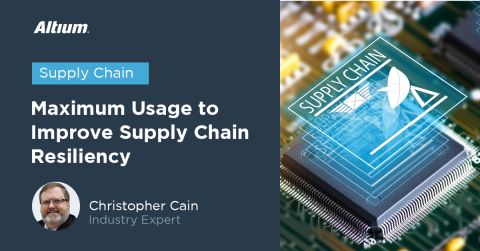Elmatica: Advancing the Vision of a Fully-Digital Supply Chain

Recently, while at IPC APEX in San Diego, I had the privilege to meet and interview Elmatica CEO, DidrikBech. Each year at the conference I volunteer as a guest editor for Real Time with IPC which always affords me a wonderful opportunity to meet interesting industry leaders such as Bech. As a follow-up, I asked to interview Bech again for the OnTrack audience so you could also learn about this fascinating Norwegian-based PCB broker. Elmatica has a presence in over 30 countries and uses a data-driven approach to provide unmatched transparency for its customers and is leading the charge towards realizing a fully digital supply chain.
Didrik Bech, CEO of Elmatica
Judy Warner: Please briefly share about your professional background and the history and model of Elmatica.
Didrik Bech: Elmatica was founded in 1971 in Oslo, Norway. The company was initially a PCB design company, then it included PCB manufacturing capabilities and finally transcended into becoming a purely dedicated printed circuit broker. Our mission is to complete our customers’ purchasing process and provide our partners with transparency into the transaction by securing accountability between the parties. This means that we secure our customers’ product development process by infusing our products, namely consulting, procurement, manufacturing, and logistics into the process.
We are a partner throughout our customers' product development process, from the idea stage offering advice to the design stage selecting standards and estimating price to verifying the delivery of the first prototype and ensuring that the right manufacturer and compliance aspect has been selected for the final product launch. Our systems automatically track all communication and analyse over + 100 characteristics on every PCB and you can clearly see this on every quotation. We do not offer fancy powerpoint presentations and marketing papers, we offer our customers transparency by showing them what we do, when we do it and how we do it. These are some elements of our digital supply chain and we are dedicated to securing our customers’ product.
I was honoured to enter the company eight years ago, now constituting the third CEO for a total of 48 years. The legacy and culture of the company are the two pillars of responsibility, which must be nourished and developed to ensure that we are aligned with future technological opportunities. Elmatica has over the last eight years developed new information technology capabilities and this has only been possible due to a very competent organization and forward-thinking owners.
Most companies experience a change of work stock annually. At Elmatica, hardly anyone ever leaves their positions. That stability and passion towards what we do and how we do it is also passed on to our customers. And of course we like to do things with a twist, like when creating our first corporate movie, slightly inspired by the cult movie Lock, Stock and Two Smoking Barrels -- not the ordinary talking heads walking around just speaking.
Warner: Please explain what a PCB broker is, and what services Elmatica offers.
Bech: Some seem to mistake a broker for a trader. A trader buys goods and can put it in stock and later it can be sold to one or multiple customers, whereas a broker only buys goods when it receives the order from the customer, especially when it is a customer specific product. We are a broker of printed circuits, the customer's extended hand towards the manufacturer, offering simplicity to the purchasing process, with transparency towards our customers regarding documentation, data, and compliance.
Transparency and live access to data is a global mega trend and not only in the PCB industry. When you buy eggs for breakfast, you want to know where the eggs are from, are they ecological, is it sustainable, is the farmer audited and approved, and have the chickens been allowed to wander free. You might have these expectations about your food and you have to trust independent actors and standards, as you neither have the time nor the knowledge to do it yourself. So I ask, what is the difference with PCB, you want to know what is going on and you want to secure this information in your supply chain and that is where we come in.
At Elmatica we have divided our products into four categories: consulting, procurement, manufacturing, and logistics. We have seen by experience that early involvement in the product development process is an advantage for all involved. This fosters an opportunity to sort out design challenges, technologies and the creation of the most feasible design for the actual product. Our mission is to complete the customer’s purchasing process, also on behalf of the manufacturers getting their input on challenges they have with customers, and where we can support them.
Warner: Since you work with many PCB designers, what are some challenges you see them having, and how does Elmatica help address these issues?
Bech: Each month we place over 900 orders to selected suppliers whereas approximately 250 are new part numbers. This amount of work can not be accomplished without daily cooperation between multiple engineering teams from various suppliers, customers and Elmatica with intrinsic knowledge of the product, and capability of each supplier.
Daily we are involved in design for manufacturing, questions regarding impedance, layer stack-up, flex design, thermal management, power design, mechanical tolerances, copper feature tolerances and more. Our customers often bring us challenges like specific stack-up suggestions based on factory materials, minimum factory capability for via holes and pad sizes, different ways to treat the via holes -- from open to 100% filled and capped -- and error in netlist due to manual changes in Gerber files or Gerber/Excellon files together with ODB++ files.
Not to mention conflicting specifications between Gerber files and text documents, a recurring issue that leads us to the founding of CircuitData -- a common, open sourced language for article specifications.
Warner: Since you are based in Norway, what geographic areas does Elmatica serve, and how do you go to market? (I.e., regional or localized sales teams?)
Bech: We have our HQ in Norway with teams spread all over Europe to South Africa and China, delivering to 38 countries on 5 continents. Our sales team is strategically placed, doing a diligent job following up on our customers and traveling to any location in need of assistance. The way the world operates today, where data is key, the system one operates in is equally important to where people are situated.
At Elmatica we have developed our own software for article registration, engineering queries, capability verification, and tracking communication, to mention some aspects. For instance, our system automatically analyzes over 108 parameters per inquiry to determine the cost, lead time and manufacturer with the right capability. The next system under implementation will check no less than + 1000 parameters.
Warner: Elmatica has developed an open source software platform to help clearly convey the PCB design intent. Please explain the purpose of the platform and what motivated you to create it. How does this work with Gerber files, IPC-2581, ODB+?
Bech: As mentioned earlier, Elmatica has over the course of many years, experienced an increasing complexity in the process of procuring printed circuits. The mix of digital specifications, drawings, PDFs and manually added information, constantly interpreted by all involved parties in the supply chain, has created a time-consuming and expensive situation. A standardized language could save time and error in board design, quoting, and the actual build of the PCB. CircuitData is an open source solution by which the industry can come together to finally speak a common language for PCB article specifications, corporate requirement profiles, engineering change notes, and engineering questions.
It is a supplement to the files that are currently sent back and forward, such as Gerbers, ODB++, and IPC-2581, making sure all aspects of manufacturing information not provided is answered. CircuitData is open sourced, available for everyone to contribute, both in the development of the language and the Board of Directors making sure the language keeps track with industry.
Didrik Bech and Judy Warner Real Time with IPC video interview at IPC APEX Expo
Warner: What trends in the electronics industry are you noticing and what are your strategies to address the changing landscape of the industry over the next 5-10 years?
Bech: We all know that the future is all about data and the industry is slowly moving forward towards full digitalization in the supply chain. Imagine how things are today, a supply chain built partly on digital communication, PDF, and paper. The tracking and controlling process are time-demanding and it's difficult to have full control and a broad overview. With a digital supply chain, we will have the capability to handle a quote digitally from start to finish by implementing automation, Application Programming Interface (API) and Artificial Intelligence (AI). This will enable us to handle more requests faster, with even higher accuracy and with the same amount of colleagues. It is a win-win situation for all involved in the purchasing process.
Increasingly automated production lines will increase our efficiency and allow us to focus on other tasks, which will create new value for our customers. The supply chain has evolved from some points of contact to complex chains of designers, OEMs, assemblers, brokers, distributors, factories and sub-contractors. All of which are sending data back and forth, doing manual labor trying to interpret. Now we think it’s time to get rid of the PDF and welcome the digital supply chain.
Talking about the future, we recently attended IPC APEX and found the speech from futurist innovator, CTO, and co-founder of Tesla, JB Straubel very interesting regarding futuristic innovation, design and the copper situation. Innovation has continually sped up in the last decade, and it will continue to accelerate. The accessibility to design and innovation tools, PCB, and components allow even the kids to start designing at an early stage.
Listening to the fascinating development of Tesla not only as a car but also a company and their learnings was truly inspirational. I have, on several occasions, written in our column in the PCB007 Magazine, “The PCB Norsemen” about the copper situation, how it will affect the industry, and how to potentially change it.
JB Straubel and Tesla mentioned the same in his presentation; raw material might be one of the biggest challenges in the years to come.
The demand for raw materials such as copper, nickel sulfate, cobalt sulfate, and lithium compounds will continue to increase, and the resources of these raw materials will face limitations. The only thing that we can say for sure is that the future will bring both challenges and opportunities, and we at Elmatica are convinced that the ones that fall off the digital express at this stage might have trouble catching up later.
















